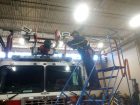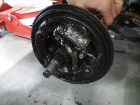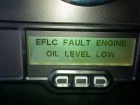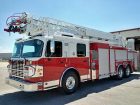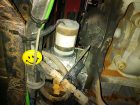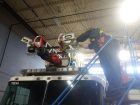
Equipment
Truck Tech: How to prevent vehicle breakdown before it happens
All emergency services need some kind of vehicle to get the job done. But the job cannot be done if your vehicle doesn’t work when you need it. Proper vehicle maintenance is essential to ensure first responders can safely and efficiently get to calls.
July 17, 2017
By Chris Dennis

Items used to extinguish fire must be inspected and kept in working order. Preventative maintenance is a regularly performed service on a piece of equipment to lower the chances of it failing. Preventative maintenance should be performed while the equipment is still working, so that it does not break down unexpectedly.
The challenge for fire departments in Canada is to ensure that the trucks and equipment are ready to assist responders. Fire department mechanics must have to have their figurative crystal balls ready, to anticipate mechanical breakdowns before they happen and plan ahead. We are expected not only to be sure that everything works but also to know what will fail next and manage issues proactively. Each department has trusted men and women who make sure that the big, shiny fire department rigs and equipment are ready, and most importantly, safe.
Preventative maintenance is essentially pre-planning, and then acting upon the pre-plan. Fleet maintenance starts with the fire chief. Ultimately, he or she is in charge. The decisions regarding the maintenance of the fleet come from the top down. I can only speak to the fire departments with which I have worked, whether as a consultant or assisting in a repair plan, but in my experience everything at the floor level goes back to the chief. The preventative maintenance program should be part of every department’s annual budget. If your fleet is older, the preventative maintenance budgets should reflect that; older vehicles require more frequent maintenance. If your department has a dedicated apparatus-maintenance division, costs can be kept down. Internal labour is a fixed rate, as the staff is already on the payroll, however parts can add up quickly. If you don’t have the luxury of an internal maintenance team or repair facility nearby, a department member will usually be tasked to reach out to trusted mechanics to make sure the work is done. The line of communication with off-site repair shops must be strict. Unfortunately, the private sector often assumes municipal or city-owned vehicles come with deep pockets, as if they have been given a signed blank cheque. At the end of the day, the fire chief will approve all repairs. The chief should have an idea, based on experience, of the maintenance needed for each apparatus. Without a regular preventative maintenance schedule, there are more challenges in keeping the fleet functioning.
Preventative maintenance includes (but is not limited to) tune-ups, oil changes, tire changes, electrical checks, ladder checks, full operational inspections, and rope checks. Canada has a wide array of weather and climate types. Every department has to adjust and do what is in the fleet’s best interest. If your department does not do regular operational truck checks (ideally daily or weekly) you should at least check monthly, even if you are a smaller or volunteer department.
From a mechanical standpoint, the 2017 edition of NFPA 1911 is the best place to start – the Standard for the Inspection, Maintenance, Testing and Retirement of In-Service Emergency Vehicles. Chapter four covers general requirements, and is a great place for to learn which preventative maintenance services are essential.
Every manufacturer has its own suggested inspection and replacement timeline during the vehicle’s lifetime. For example, aerial inspections are based on hours in service. Most required services are based on hours, which can be monitored via the apparatus hour meter (which can be located in many places, so ask the manufacturer where to find it). I recommend that departments monitor maintenance timelines on the cab and chassis via engine hours. Because the trucks do not run lots of miles and the engine is kept running to power other parts of the vehicle during a response, maintenance intervals cannot be monitored through mileage. Engines are often running while trucks are standing still. For example, if the vehicle has power take off, it also runs a fire pump, a generator, an aerial ladder and other equipment. In some cases, the hour meter may be accessible through the dash display. If there is no hour meter, I suggest installing one on the chassis engine side. Speaking of hour meters, depending on where your department is located, there may be tax credits available on diesel fuel when in power take-off mode. Though you will need to monitor those hours as well as power take-off engage and disengage times. As you know, every bit of money back helps.
Vehicle preventative maintenance services can be broken down to include tests, measurements adjustments, parts replacement and cleaning. The benefit to staying ahead of a break down means less vehicle downtime. Preventative maintenance keeps departments on top of repairs and helps to prevent unexpected breakdown, keeping the fleet ready to respond when the call comes in.
Chris Dennis is the chief mechanical officer for Vaughan Fire & Rescue Service in Ontario. He can be reached at Chris.Dennis@vaughan.ca
Print this page
